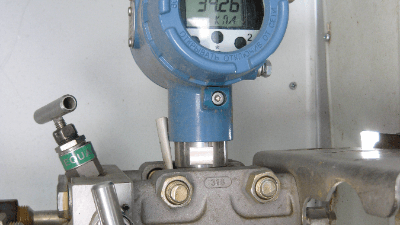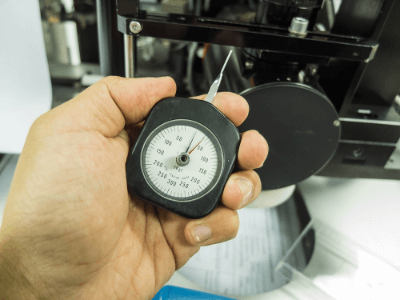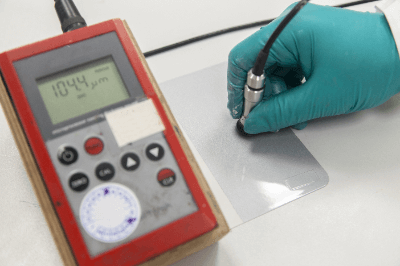What Is a Surface Temperature Sensor?
A surface temperature sensor is a device designed to measure the temperature of an object’s surface.
There are two types: a contact type, which measures by physically contacting the object, and a non-contact type, which measures without physical contact. These sensors find applications in various fields.
Uses of Surface Temperature Sensors
The applications of surface temperature sensors vary depending on whether they are contact or non-contact types.
1. Contact-Type Surface Temperature Sensor
Thermocouples, a representative type of contact-type surface temperature sensors, are primarily used in research, and testing, and as built-in sensors in equipment, machinery, and production lines. Another common contact-type surface temperature sensor is the “thermistor,” widely utilized in electrical appliances such as refrigerators and air conditioners, making it one of the most widely used surface temperature sensors in mass production.
2. Non-contact Surface Temperature Sensor
The typical non-contact surface temperature sensor detects the amount of infrared radiation emitted by the object to measure temperature without direct contact.
Principle of Surface Temperature Sensors
Here, we explain the principles behind contact-type surface temperature sensors using “thermocouples” and “thermistors,” as well as non-contact-type surface temperature sensors using “infrared detection sensors.”
1. Surface Temperature Sensor Using a Thermocouple
A thermocouple is a temperature sensor made from two different metal conductors. It operates based on the phenomenon that when both ends of the conductors are connected to form a closed circuit and different temperatures are applied to the contact points, a voltage is generated between the metals. In other words, temperature sensors using thermocouples detect temperature by converting the generated voltage into temperature. This method is advantageous for its rapid response, cost-effectiveness, and wide temperature range measurement capability.
2. Surface Temperature Sensor Using a Thermistor
Surface temperature sensors using thermistors rely on the property of the thermistor element, whose resistance changes with temperature. Temperature is measured by monitoring the resistance and converting it into temperature values.
3. Surface Temperature Sensor Using an “Infrared Detection Sensor”
Non-contact surface temperature sensors that employ “infrared detection sensors” detect infrared radiation emitted by the object to measure temperature. These sensors are commonly used to measure human body temperatures and other applications where contactless temperature measurement is required.
Additional Information on Surface Temperature Sensors
1. Lifespan of Contact-Type Surface Temperature Sensors (Thermocouples)
Contact-type surface temperature sensors, like thermocouples, have a limited lifespan. Continuous use without awareness of this limitation may result in inaccurate surface temperature readings. The lifespan of a thermocouple varies depending on temperature, atmosphere, and metal type.
For example, in an oxidizing atmosphere below room temperature, a precious metal thermocouple susceptible to corrosion and rust may last approximately 2,000 hours, while a more robust base metal thermocouple can last around 10,000 hours. However, when operated at the upper temperature limit of each metal, their lifespans are significantly shorter, ranging from about 50 to 250 hours.
Special attention is needed when using thermocouples in surface temperature sensors for electrical appliances and industrial products. For instance, in a furnace or kiln application, if the thermocouple deteriorates and erroneously senses a lower temperature, it can lead to unnecessary costs as gas or other substances are burned to raise the temperature. Moreover, thermocouples are less accurate at extremely high temperatures, necessitating periodic maintenance and replacement.
2. Types of Non-contact Surface Temperature Sensors
Non-contact surface temperature sensors are categorized into two types:
- Non-contact Thermometers: Used to measure human body temperatures and other applications.
- Infrared Temperature Sensors: Employed for measuring temperatures of objects that are hazardous to approach due to high temperatures or those in motion.
Non-contact surface temperature sensors measure temperature by assessing the intensity of infrared radiation emitted by the object. They are invaluable in industrial applications due to their rapid response and instantaneous temperature measurement capabilities.
However, it’s important to note that there is a sensitivity difference between “non-contact thermometers” and “infrared temperature sensors” of approximately ±1°C, with “non-contact thermometers” having relatively lower sensitivity. As a result, human body temperature is best measured using a “non-contact thermometer,” which includes error compensation functions to account for variations in body structure and humidity.
Nonetheless, these non-contact surface temperature sensors have limitations; they may not accurately measure the temperature of materials that do not emit infrared radiation, such as metals. Additionally, they may struggle to provide accurate readings in humid environments, where water vapor can absorb the emitted infrared radiation, affecting lens-based measurement accuracy. Regular maintenance is advised in such cases. However, as mentioned earlier, “non-contact thermometers” come with correction functions to mitigate these issues.

 A load measuring instrument is a device used to measure the force that pulls or pushes an object.
A load measuring instrument is a device used to measure the force that pulls or pushes an object. A film thickness meter is a device that measures the minute thickness of an object.
A film thickness meter is a device that measures the minute thickness of an object.